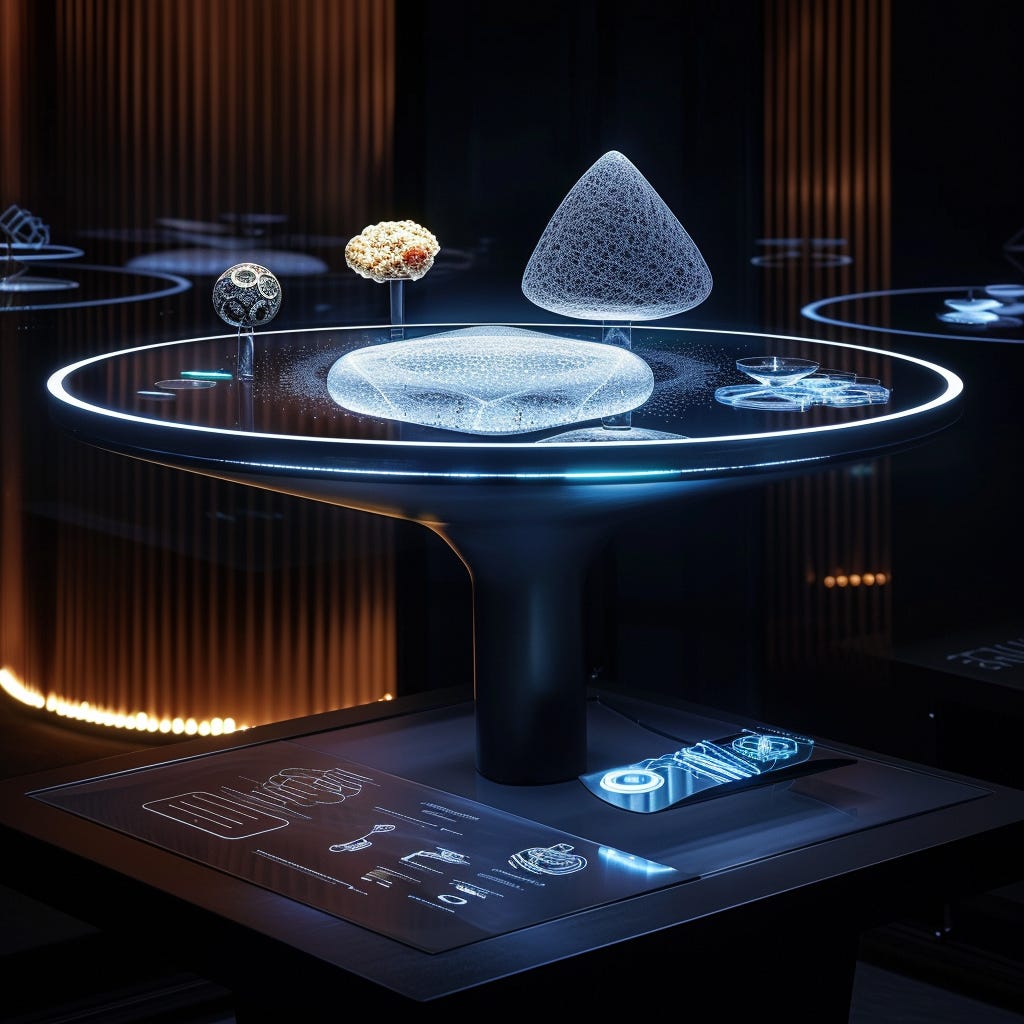Revelations by relating to fuzzy intelligence
Weekly thoughts on human-AI co-performances
Hi, y'all! I returned from a vacation, so in case you missed last two weeknotes, that was the reason. I did, however, post short thoughts as I was waiting out a storm in the middle of Europe. Check the 306 edition boosted humans by in-ear intelligence.
And I had to try myself the NotebookLM audio last week, so read the 307 edition with thoughts Uncanny listening to your incepted thoughts
(check the synthetic podcast on Predictive Relations here)
So, let’s dive again into the usual reflections on the impacts of new tech, with some triggered thoughts on what we learn about ourselves by relating to the fuzzy intelligence of the next internet.
And kicking off this quarter will be stuffed with fulfilling projects for the Wijkbot (like the workshop next week), ThingsCon (Salon and conference), and a new research project.
As always, you can read the full-length newsletter with all the links here (and subscribe of course if you like to get it in your mailbox.
Triggered thought
The hot tech news of the week was linked to the Meta Connect presentation by Mark Zuckerberg launching the Orion headset prototype. People who use it are enthusiastic about the choices made in both the AR + interface, the control system, and dividing the ecosystem of glasses, wristbands, and offloading computing pucks. It is a good reference point for Vision Pro. Real AR versus synthetic AR, triggering different concepts of interacting with the real world.
The thing is still a prototype for testing and not available to buy (cost price around 10k), but the choices made by Facebook Reality Labs (we have a Dutch design manager working in the heart of that lab) look smart. Of course we should be aware of the way the business model of Meta is played out here, creating interventions in our day-to-day reality. The other announcement of having synthetic posts remixing your interests into friends-alike posts might be a signpost that is questionable for our trust in reality…
Let’s connect it to a new app Social AI that was discussed on a podcast of The Verge with the maker Michael Sayman. His frame and pitch is: until now in social media dominance in using the internet, we have been communicating through the internet with others, while the introduction of large language models we communicate more with the internet, and the fuzzy intelligence that is the LLMs are providing.
I have tried the app, and it is indeed a new form of using AI; not perfect, missing some intuitively in the on-boarding and a bit overwhelming in the stream of responses, but I like the direction that is facilitating much more of a kind of co-performance, working closely in partnership and collaboration with the synthetic reality.
The introduction of the real voice in ChatGPT remains a good reference point too. In another (Dutch) podcast (Poki), the frame was made of AI as a make-up CGI and the more seamless meta AR solution. The experiment they did with the now available o1 natural voice-interface was telling. The different hosts are also treating the AI very differently. More as someone to care for the AI, to someone that almost is being a bully, treat the AI like a slave. I think this indicates that we are in a phase where the new AI assistants are (also) providing a mirror of ourselves, how we treat technology, or even our own personality, as one of the hosts mentioned how it makes her shy to the AI.
As we know from the dangerous effects of group dynamics, we should know what living together with the new AI cobots, the pal-tech, will uncover in us. The positive research that showed how AI tools can prevent conspiracy theories to develop and flourish, can also reach the counter effect. Just like we have seen with social media…
This weekly “Triggered Thought” is written as part of the Target is New newsletter, which offers an overview of captured news from the week, paper for the week, and interesting events. Find the full newsletter here.
About the author; Iskander is particularly interested in digital-physical interactions and a focus on human-tech intelligence co-performance. He chairs the Cities of Things foundation and is one of the organizers of ThingsCon. Target is New is his “practice for making sense of unpredictable futures in human-AI partnerships”.


